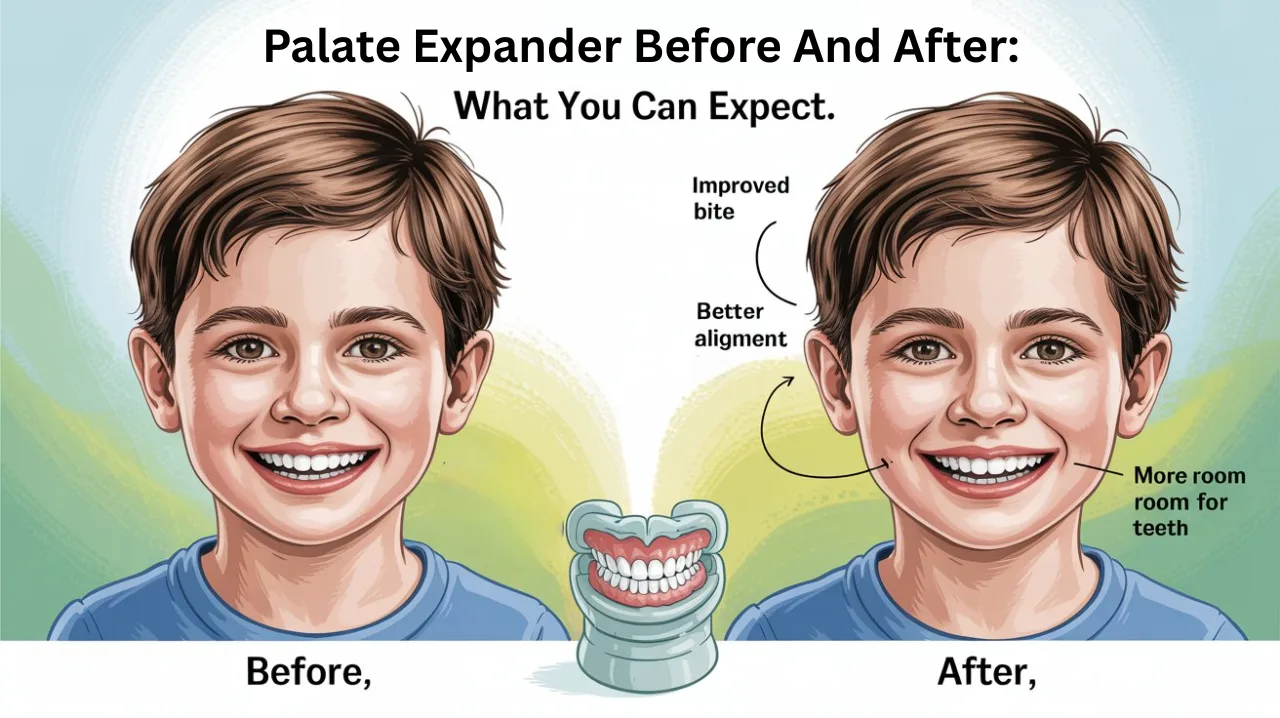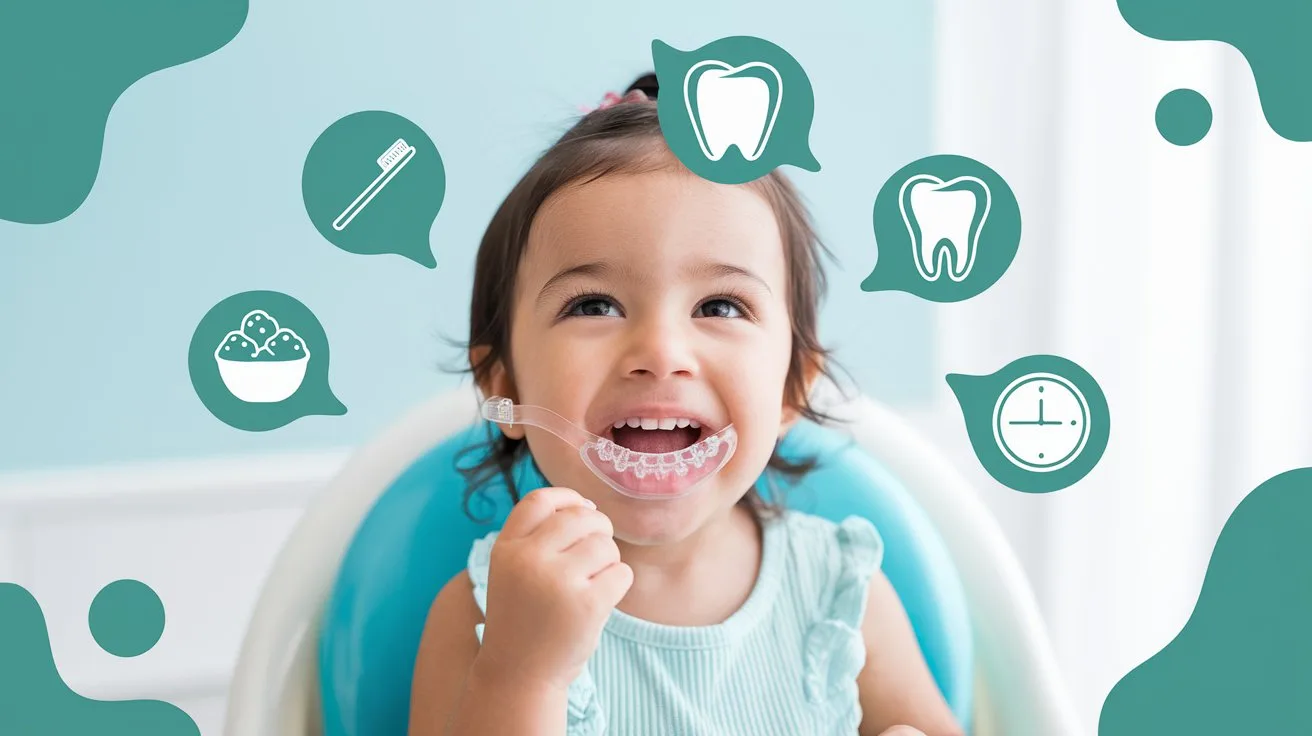Palate Expander Before And After: What You Can Expect

Are you a parent in North Miami exploring options to help your child with a narrow jaw or crowded teeth? Dentists trust palatal expanders as a go-to tool for kids aged 7 to 15. These devices are used to gently widen the upper jaw, creating more space for incoming teeth and supporting better airflow. This guide will demonstrate palate expander before and after changes. Once you understand the process, you will feel more confident when picking the most appropriate solution for the teeth and the development of your child.
What is a Palate Expander?
A palate expander is a special device that fits in the mouth of your child. It is fitted into the roof of their mouth. It works by gradually widening the upper (maxilla) jaw. This treatment is typically effective for children because their jaws are still developing and more adaptable during growth.
Spreading the jaw:
- Creates space for crowded teeth
- Helps correct bite issues, such as crossbites or underbites
- Can support improved breathing by expanding the nasal passage area
At Ivanov Orthodontics, palate expanders play a role in their early interceptive orthodontic care. This treatment often goes hand in hand with braces or aligners down the road to guide permanent teeth into their ideal spots.
Who Needs a Palate Expander?
Your kid might need a palate expander if they show signs of:
- Crowded or overlapping teeth
- Crossbite or underbite
- A narrow smile
- Mouth breathing or snoring
- Speech issues
Orthodontists often suggest an palate expander for kids between 7 and 12 years old because the upper jaw bones haven’t fused yet. Expanding at this age is easier and yields better outcomes.
Early evaluation may help reduce the need for more extensive treatments later, depending on your child’s specific needs.
What You Can Expect Before We Start
Before we put in a palate expander, your kid will get a full check-up from the orthodontist. This includes:
- Looking at their teeth
- Taking digital X-rays or 3D pictures
- Snapping photos of their teeth and face
- Making molds or digital scans to create the custom device
At Ivanov Orthodontics, we’ll walk you through what to expect and discuss an individualized plan tailored to your child’s case.
The Day of Installation
The installation process is usually quick and generally well-tolerated by children. Dentists cement it to the top back teeth without needing to numb the area. Most children get used to it in a couple of days.
On day one:
- Talking might sound weird
- Soft foods work best
- Your kid may feel some pressure or slight discomfort
You’ll receive guidance on how to turn the expander’s key, which gently adjusts the device to promote gradual expansion.
Daily Changes and Routine
Turning the key is simple, and you’ll be given clear instructions to follow.
Some handy tips for this stage:
- Turn the key at a consistent time daily
- Use a flashlight or mirror for better visibility
- Set reminders or track changes in a notebook or app
- Attend regular appointments for progress checks
Most widening stages take two to four weeks, but the device stays put for four to six months to let new bone grow and steady the jaw.
Palate Expander Before and After Changes
When talking about palate expander before and after changes, here’s what you’ll see:
Before Treatment:
- Teeth crowding in front or teeth growing
- A slim upper jaw or V-shaped arch
- Problems with speech or breathing through the nose
- Snoring or poor sleep quality
After Expansion:
- A broader, more uniform arch
- More room for permanent teeth
- Less tooth crowding
- Well-proportioned facial features
- Better breathing
Often, a space forms between the front teeth during expansion. This signals that the device works as intended. Later, braces or aligners can close this gap and straighten the smile.
Widening the upper jaw may support improved airflow and is sometimes included in airway-conscious orthodontic care plans.
Possible Side Effects and How to Handle Them
Palate expanders are safe, and kids handle them well, but a few side effects might pop up:
- Short-term changes in speech
- Slight discomfort or pressure
- More spit at first
- Trouble chewing in the beginning
These effects are typically mild and tend to subside within a few days. Tell your child to drink lots of water, eat soft foods, and read out loud to get used to talking with the expander.
If you see ongoing pain, swelling, or problems turning the key, get in touch with your orthodontist right away.
After Removal: What’s Next?
Once the expander has been stable for a few months, your child will have a quick visit to remove it. The next steps will depend on your child’s specific orthodontic needs. Most kids will move on to:
- Braces to align teeth
- Retainers to maintain results
- Invisalign for teens, in some cases
Your orthodontist will create a personalized follow-up plan to help maintain progress and support your child’s long-term oral health.
Why Choose Ivanov Orthodontics to Get Palate Expanders?
Ivanov Orthodontics focuses on early orthodontic care, offering supportive treatment tailored to a child’s growth and comfort.
Our approach consists of:
- Thorough imaging and planning
- Personalized treatment
- Emphasis on airway health
- Teaching and backing for families
- A friendly, up-to-date clinic setting
Dr. Ivanov and his team will guide you through each step, from fitting to follow-up care, making sure your child feels at ease and self-assured.
Final Thoughts
Knowing the changes in the palate expander before and after helps you get ready for what’s coming. Expansion treatment has an impact on both function and appearance, from correcting crowding to improving breathing.
If your kid shows early signs of tooth problems, act fast. Quick steps can stop bigger issues down the road. Families in North Miami put their trust in Ivanov Orthodontics for their know-how in palate expanders, braces for kids, and treatments that focus on airways.
Want to begin? Check out Ivanov Orthodontics to find out more about how we handle early orthodontic care, including palate expanders kids, braces, and Invisalign for kids. Book your visit and make the first move towards your child’s sure and healthy smile.
FAQ’s
Does a palate expander alter appearance?
Yes, but positively. The two uses of the palate expander, the device to expand the upper jaw, may widen the smile, balance the face, and correct nasal congestion. There may occur the temporary separation of the front teeth, and it is normal and is usually mended later.
At what age is an expander too late?
Palate expanders are most effective at the ages of 7 and 12. The jawbones fuse with age after the age of 15, hence rendering non-surgical expansion ineffective. Nevertheless, special orthodontic evaluation and planning can mean that other treatments are offered to adults.


